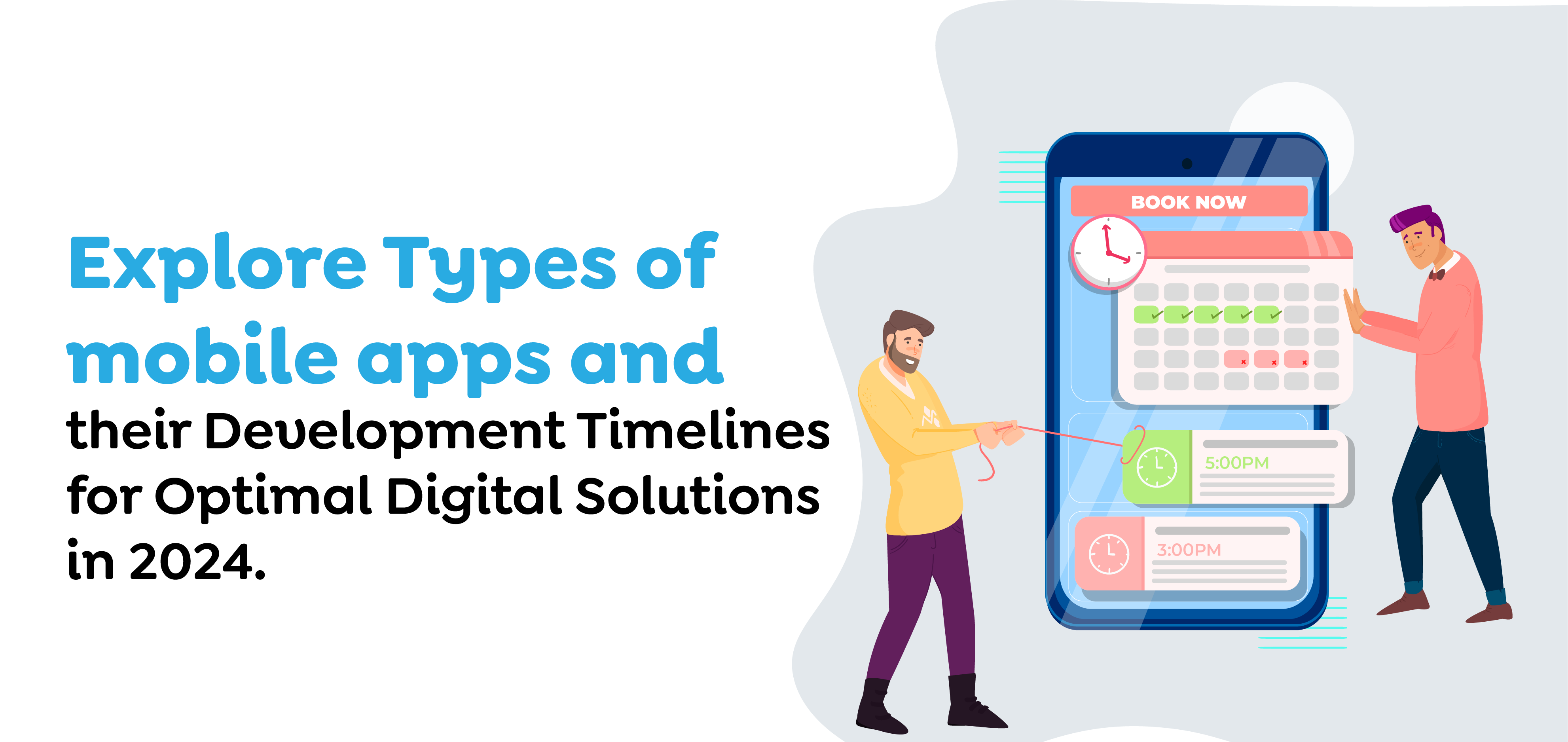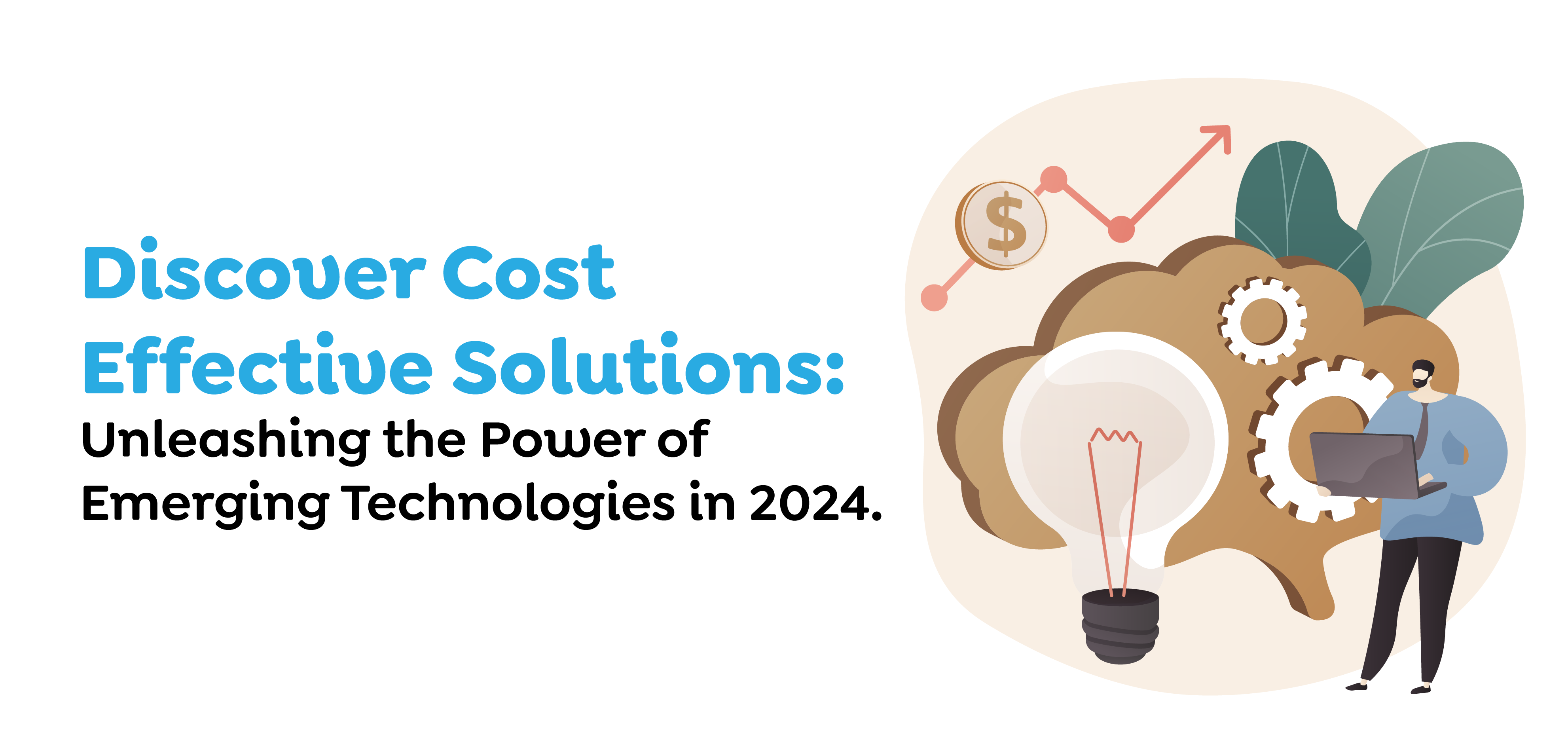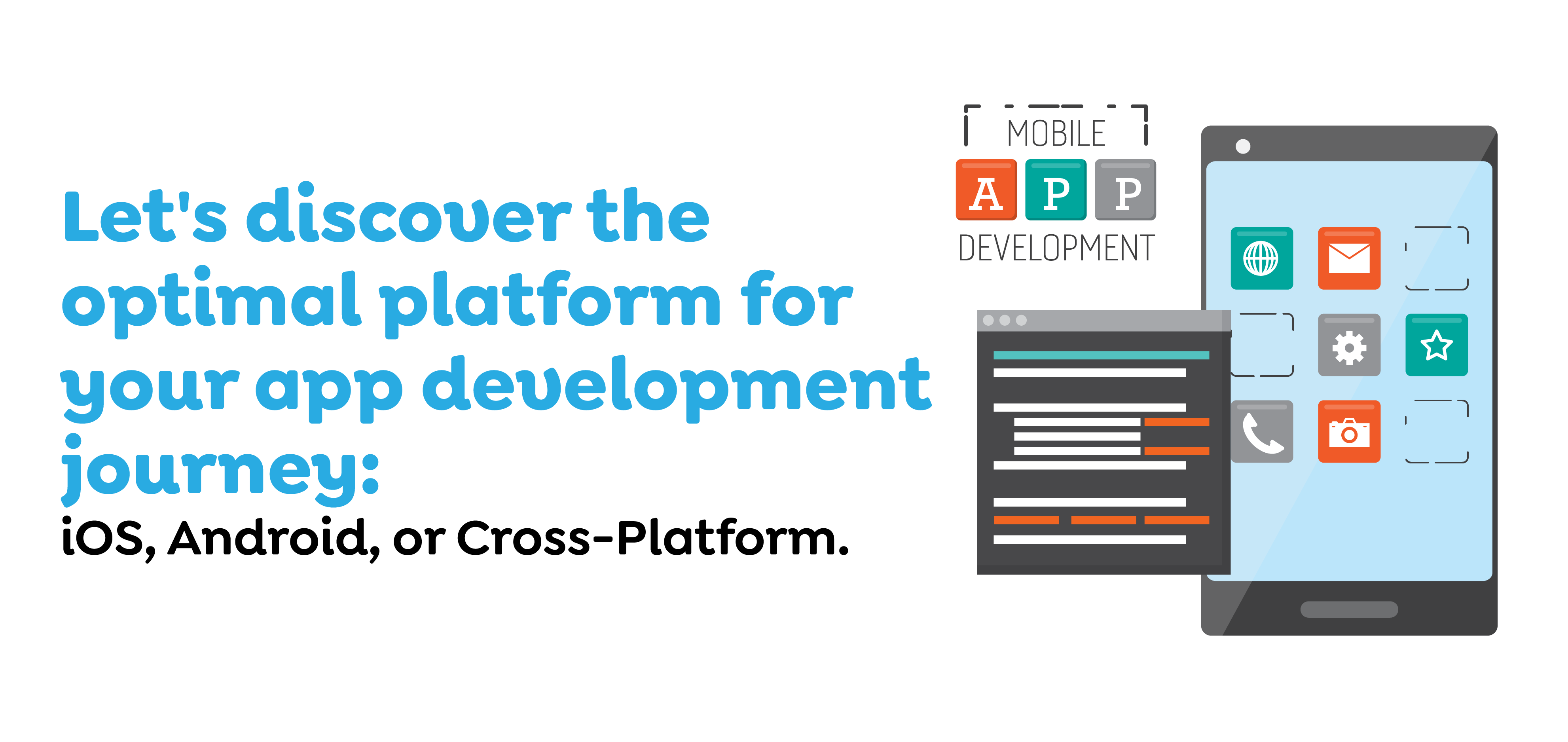22 Dec 2023
How Much Does it Cost to Develop a Mobile App in Saudi Arabia in 2024?
Kaushiki

Have you ever wondered what crucial aspect often gets overlooked when transforming your idea into a fully-fledged app?
The answer lies in understanding the intricacies of app development costs. As businesses in the Kingdom adopt digital transformation with the help of a mobile app development company in Saudi Arabia, a crucial consideration for entrepreneurs and enterprises is the cost of developing a mobile app. This article aims to decipher the intricacies of app development costs in Saudi Arabia, drawing comparisons with the mobile app development landscape in the UAE.
Are you ready to delve deeper?
If yes, then let’s get started.
The Pinnacle of Saudi Tech: A Digital Transformation Journey
Saudi Arabia’s actions align with its 2030 vision, which has strongly emphasised diversifying its economy through technology and innovation with the help of a mobile app development company in Saudi Arabia. The Kingdom’s commitment to becoming a global technology hub has resulted in a burgeoning mobile app development sector. As we explore the cost dynamics, it’s essential to comprehend the factors that contribute to shaping these costs.

Decoding App Development Costs: Factors at Play
- App Complexity: The cost to build an app in Dubai lies in the complexity of an app, which is a primary factor influencing development costs. Simple apps with basic features will incur lower fees than complex, feature-rich ones. The demand spans a spectrum in Dubai, from straightforward business apps to highly intricate solutions integrating cutting-edge technologies.
- Features and Functionality: The features and functionalities embedded to develop a mobile app in UAE contribute significantly to the overall cost. Apps incorporating advanced characteristics such as real-time updates, geolocation services, and complex algorithms will naturally have a higher development cost. Businesses in Dubai increasingly seek apps built by a mobile app development company in Dubai that provide seamless user experiences and innovative functionalities, reflecting a dynamic market.
- Design and User Experience (UI/UX): The importance of an intuitive and aesthetically pleasing user interface cannot be overstated. Dubai businesses recognise the significance of UI/UX design in ensuring user satisfaction and engagement. A mobile app development company in UAE helps craft a visually appealing and user-friendly interface that contributes to the overall cost, aligning with global app development standards. Firms are emphasising UI/UX app development more to provide users with a better experience.
Navigating the App Development Landscape in Saudi Arabia
Entrepreneurs and businesses in Saudi Arabia stand at the crossroads of opportunity as they navigate the app development landscape. While considering the cost implications, it is essential to weigh the unique factors that make Saudi Arabia an attractive destination for mobile app development.
The Saudi Advantage:
- Cost-Effective Talent: The availability of a skilled mobile app development company in Saudi Arabia at a relatively lower cost position acts as an appealing destination for businesses seeking cost-effective yet high-quality app development.
- Growing Ecosystem: Saudi Arabia’s growing technology ecosystem and government support provide a fertile ground for Innovation. This can translate into cost advantages for businesses leveraging local expertise.

Factors Influencing On-Demand App Development Cost in Saudi Arabia
The dynamic landscape of on-demand app development in Saudi Arabia reflects the Kingdom’s growing digital economy. The cost of developing on-demand applications is influenced by various factors that businesses must consider as they embark on their digital transformation journey.
- App Complexity and Functionality: The complexity of an on-demand app, whether a straightforward service application or a multi-functional platform, significantly impacts the development cost. Basic apps with essential features may incur lower costs, while more complex solutions requiring advanced functionalities and real-time capabilities will naturally have a higher development cost.
- User Interface and User Experience: Design Investments in making an intuitive and visually appealing UI/UX design contribute to a positive user experience. An on-demand app development company in Saudi Arabia recognizes the importance of innovation in ensuring user satisfaction, and a well-crafted UI/UX design can elevate the overall cost of on-demand app development.
- Integration of Advanced Technologies: Combining advanced technologies, such as Artificial Intelligence and machine learning, can improve the functionality of on-demand apps. Real-time features, like tracking and notifications, donate to a more refined user experience but may increase development costs.
- Security Features and Compliance: Ensuring the security of user data and compliance with regulatory standards are paramount in on-demand app development. Implementing robust security features and adhering to local and international regulations may add to the overall cost but is essential for building trust and credibility.
- Scalability and Future Expansion: On-demand apps should be scalable to accommodate future growth. Developing a scalable architecture from the outset may incur higher initial costs, but it prevents the need for extensive reengineering as the business expands its user base and services.
- Geographic Scope and Localisation: The geographic scope of the on-demand app and the need for localisation influence costs. Adapting the app to serve local preferences and cultural nuances is vital for triumph in the Saudi Arabian market.
- Third-Party Integrations: Integrating third-party services, such as payment gateways, mapping services, or external APIs, can enhance the functionality of on-demand apps. However, each integration introduces complexity and may contribute to increased development costs.
- Testing and Quality Assurance: Thorough testing and quality assurance processes are essential to deliver a reliable, on-demand app. Investing in comprehensive testing protocols ensures a bug-free and seamless user experience but adds to the overall development cost.
- Maintenance and Updates: Post-launch maintenance and updates are integral to the long-term success of on-demand apps. Planning for ongoing support and feature updates is a cost consideration that businesses must consider in their budget.

Types of Mobile Apps for Businesses and Their Development Timeframes
As firms in Saudi Arabia explore on-demand app development, it’s critical to comprehend the types of mobile apps available and the respective timeframes for their growth.
- Service-Based Apps: Service-based apps supply specific services to users, such as food delivery, transportation, or home services. These apps concentrate on connecting service providers with customers needing particular services. Service-based apps typically have a moderate development timeframe built by a top mobile app development company in Dubai, ranging from a few weeks to a few months, depending on the complexity and features required.
- E-Commerce Apps: E-commerce apps facilitate the online buying and selling of products. They include features like product listings, shopping carts, and secure payment gateways. The development timeframe for e-commerce apps varies, with more straightforward solutions taking a few months and more complex platforms with advanced features requiring a more extended development period.
- Social Networking Apps: Social networking apps enable customers to connect, share content, and engage with others. They usually have features like user profiles, messaging, and content sharing. Creating social networking apps can be time-intensive, ranging from several months to a year, depending on the desired features and customisation.
- Enterprise Apps: Enterprise apps cater to the specific needs of businesses, streamlining internal processes and improving efficiency. They may include features for project management, communication, and data analytics. The development timeframe for enterprise apps varies based on complexity, ranging from a few months to a year or more for comprehensive solutions.

Emerging Technologies: Cost-Effective Solutions for Advanced App Development
In the fast-changing environment of mobile app development in Saudi Arabia, staying abreast of emerging technologies is crucial for staying competitive and exploring cost-effective solutions that can elevate the sophistication of mobile applications. This section delves into emerging technologies that offer a cost-effective advantage with a mobile app development company in Saudi Arabia.
Progressive Web Apps (PWAs): These web applications give a native app-like experience while accessible through web browsers. They combine the best of both web and mobile app functionalities. PWAs are cost-effective as they eliminate the need for separate development for different platforms. A single codebase can cater to various devices and platforms, streamlining development and maintenance costs.
Benefits:
- Offline Functionality: PWAs can function offline, enhancing user experience in areas with intermittent connectivity.
- Fast Loading: PWAs load quickly, providing a seamless and responsive user experience.
Low-Code and No-Code Development Platforms: Low-code and no-code development platforms permit the Innovation of applications with minimal manual coding. They leverage visual interfaces and pre-built components to accelerate the development process. These platforms significantly reduce development time and costs by enabling developers to create functional apps with less coding. They also open up app development to individuals with limited coding experience.
Benefits:
- Rapid Prototyping: Low-code platforms facilitate quick prototyping, allowing businesses to iterate and refine app concepts swiftly.
- Reduced Development Time: The visual interface and pre-built components reduce the time required for traditional coding.
Serverless Computing: Serverless computing allows developers to build and run applications without managing server infrastructure. Functions are executed in response to events without needing a server. With serverless computing, enterprises only pay for the computing time and resources used, eliminating the need for continuous server maintenance costs.
Benefits:
- Cost-Efficient Scaling: Serverless architecture automatically scales based on demand, optimising costs during periods of low usage.
- Simplified Infrastructure: Developers can focus on code without worrying about server management.
Blockchain Technology: Blockchain is a decentralised and distributed ledger technology that assures data transparency, security, and immutability. Blockchain can decrease costs associated with intermediaries and improve safety, making it an appealing option for apps involving transactions, contracts, or data verification.
Benefits:
- Enhanced Security: Transactions registered on the blockchain are secure and tamper-resistant.
- Decentralisation: Eliminating intermediaries can reduce transaction costs and improve efficiency.
Augmented Reality and Virtual Reality: AR and VR technologies make immersive experiences by overlaying digital information in the real world (AR) or creating entirely virtual environments (VR). While historically considered expensive, the growing availability of AR and VR development tools makes these technologies more accessible and cost-effective.
Benefits:
- Enhanced User Engagement: AR and VR can provide unique and engaging user experiences, making apps stand out in competitive markets.
- Training and Simulation: Cost-effective training and simulation scenarios for various industries.
Artificial Intelligence and Machine Learning: AI and ML involve the development of algorithms that facilitate computers to accomplish tasks that traditionally require human intelligence. AI and ML can automate processes, enhance user experiences, and provide valuable insights, ultimately reducing business operational costs. That’s why many enterprises take help from an AI app development company to change their vision into an app.
Benefits:
- Predictive Analytics: AI and ML can predict user behaviour, allowing for personalised app experiences.
- Automation of Repetitive Tasks: Streamlining operations and reducing manual intervention.

Choice of Platform: iOS, Android, or Cross-Platform
As businesses in Saudi Arabia contemplate their mobile app monetisation strategies, the choice of development platform becomes pivotal. Each platform—iOS, Android, or cross-platform—has unique considerations and impact on potential revenue streams.
iOS Monetization Considerations
- User Spending Patterns: iOS users are often known for higher spending patterns on in-app purchases and premium apps. This can be advantageous for apps implementing in-app purchases or subscription models.
- App Store Guidelines: Strict app store guidelines may influence the types of monetisation strategies that can be employed. An iPhone app development company that understands and sticks to these guidelines is essential for successful app monetisation on iOS.
Android Monetization Considerations
- Broader Market Reach: The Android app development market share provides a more comprehensive app reach. Monetisation strategies focused on a high volume of users, such as in-app advertising, can be lucrative on the Android platform.
- Diverse Device Ecosystem: The diverse range of Android devices requires thorough testing and optimisation for various screen sizes and specifications, influencing development costs and, subsequently, monetisation strategies.
Cross-Platform Monetization Strategies
- Cost Efficiency: Cross-platform development frameworks, like React Native, can offer cost efficiency by allowing code reuse across iOS and Android platforms. This enables businesses to implement monetisation strategies without duplicating efforts.
- Consistent User Experience: A React native app development company ensures a consistent user experience across different devices, contributing to user satisfaction and potentially enhancing the effectiveness of monetisation strategies.
Techugo, Paving the Way for Innovation
As businesses in Saudi Arabia embark on their digital transformation journey through mobile app development, understanding the app development cost is paramount. Techugo, a seasoned and committed mobile app development company in Saudi Arabia, goes beyond the conventional boundaries of designing, developing and delivering digital solutions to clients. Our commitment extends throughout the entire lifecycle of your project, offering continuous support and maintenance.
From the initial ideation phase to the final app publishing and ongoing support, Techugo provides a comprehensive suite of resources all under one roof. This holistic approach ensures a seamless and efficient development process and translates into significant cost savings for our clients.
If you’re eager to explore how Techugo can propel your business growth through innovative app development, we invite you to connect with our team of seasoned experts.
Get in touch today with our team of experts.
FAQs
- What factors affect the cost of developing a mobile app in Saudi Arabia?
Key factors include app complexity, features, development platform (iOS, Android, or cross-platform), design, integration of advanced technologies, and ongoing maintenance.
- How can businesses monetise their mobile apps effectively in Saudi Arabia?
Monetisation strategies include in-app advertising, in-app purchases, freemium models, affiliate marketing, and data monetisation, depending on the app’s nature and target audience.
- What considerations are vital when choosing a development platform for a mobile app in Saudi Arabia?
Consider factors like the target audience’s preferences, app store guidelines, development costs, and the efficiency of cross-platform development frameworks such as React Native.
Get in touch.
Write Us
sales@techugo.comOr fill this form



 SA
SA  KW
KW  IE
IE AU
AU UAE
UAE UK
UK USA
USA  CA
CA DE
DE  QA
QA ZA
ZA  BH
BH NL
NL  MU
MU FR
FR 













